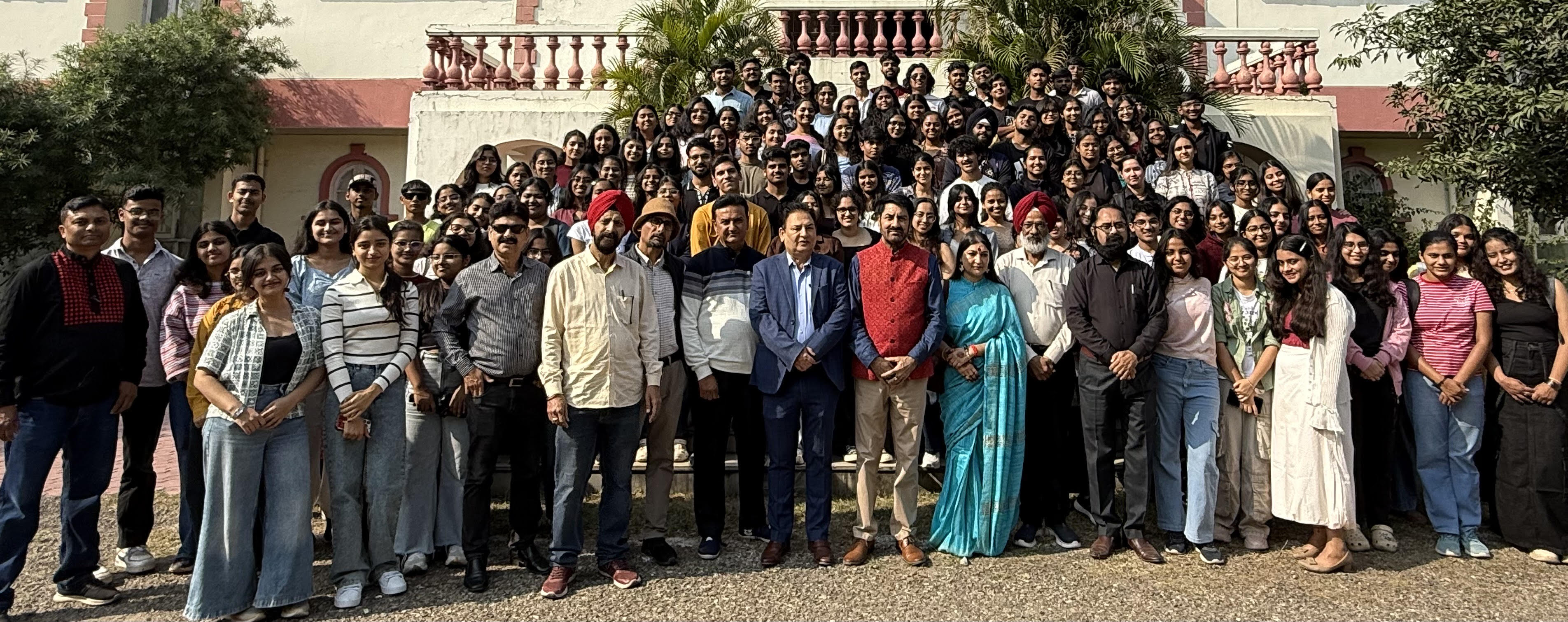
early times report
Jammu, Oct 29: Natrang Jammu, in collaboration with Kala Kendra Jammu, organized a ‘J&K Contemporary Art Show’ across the four art galleries of Kala Kendra for the students of the Indian Institute of Management (IIM) Jammu.
In a unique initiative aimed at bringing together creators and their creations under one roof, six eminent artists were invited to interact with the students.
The artists included Rohit Verma (Painter), Sukhjeet Singh Kukkal (Sculptor/Mural Artist), Richa Mahajan (Painter), Jang S. Varman (Sculptor/Painter), Amit Salathia (Painter/Art Educator), and Suresh Sharma (Painter/Installation Artist). All six artists were honoured on the occasion by Balwant Thakur, Director Natrang, and Dr. Javed Rahi, Secretary Kala Kendra Jammu, on behalf of Natrang.
Earlier, Dr. Javed Rahi elaborated on the significance of this exclusive art exhibition, which showcased nearly all the prominent painters and sculptors of Jammu and Kashmir. Calling it a landmark cultural moment, he expressed gratitude to Natrang for facilitating the participation of pan-India audiences through IIM Jammu, allowing them to appreciate and understand the evolving trends in the contemporary art of the region.
He further remarked that Jammu and Kashmir takes immense pride in possessing one of the largest collections of contemporary art in the country, and such exhibitions provide rare opportunities to display this creative strength.
Balwant Thakur, who conceptualized and spearheaded this initiative, emphasized the importance of exposing young minds to the world of creativity.
He expressed his gratitude to Prof. B.S. Sahay, Director of IIM Jammu, for recognizing the value of arts in education. As part of their holistic development, students of IIM Jammu are being introduced to both visual and performing arts, enriching their perspectives and nurturing empathy, creativity, and confidence.
In his address, Balwant Thakur underlined that arts are not merely decorative or recreational pursuits but vital components of education that shape character, imagination, and leadership. He noted that exposure to arts encourages observation, sensitivity, and open-mindedness—qualities that are indispensable in effective management and governance.
He added, “The arts teach us to see beyond data and statistics, to connect emotionally with people, and to understand human experiences in their deepest forms. This ability to feel and empathize is what truly defines a leader.”
Thakur further stated that by engaging with artists and their creative processes, students learn the value of patience, discipline, and innovation.
He highlighted that the integration of art into education helps bridge the gap between intellect and intuition, enabling future administrators to make more humane and culturally informed decisions. “In an age driven by technology and competition,” he concluded, “arts act as a balancing force—grounding us, refining our sensibilities, and reminding us of the shared humanity that binds us all.”
He emphasized that in today’s rapidly changing world, the inclusion of arts in academic institutions is not just desirable but essential for nurturing visionary, empathetic, and well-rounded leaders who can respond creatively to the complex challenges of modern society.
|
